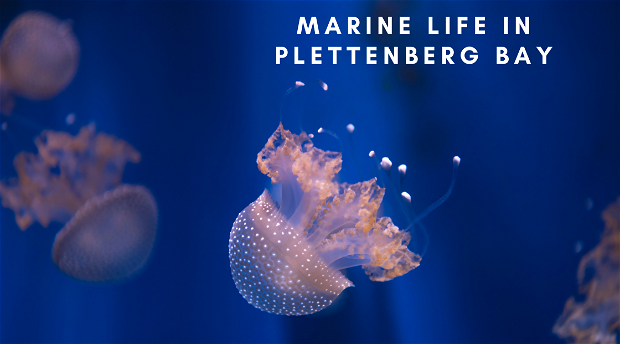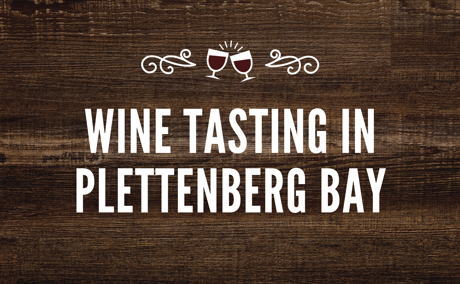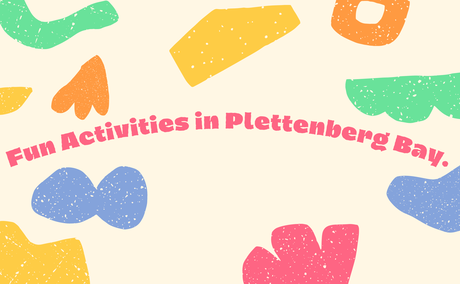“Let them eat cake!” ~ Marie Antoinette “Let them eat everything!” ~ The Dunes Plett Any proud South African will tell you that when it comes to food, they take it seriously! Today, food is more of an art than just a mere dish. The more there is to discover, the more we wish to explore! Plettenberg Bay boasts unique restaurants with stunning views, and what better way to spend time with...
Marine Life in Plettenberg Bay

Plettenberg Bay boasts a combination of unforgettable destinations and stunning scenery. Under its belt, it is also home to some of the most exotic marine creatures that will leave you in awe of Creation.
Plettenberg Bay currently holds a significant sector in tourism based on marine tours that will make visitors come back for more (and more!).
BRYDE’S WHALE
Found in Plett’s waters all-year-round, the Bryde’s whale grows between 15-16.5 metres and weigh 40 tons. They can be found in the warm waters of the Indian, Pacific and Atlantic oceans but tend to favour coastal waters, making their presence in Plettenberg Bay an absolute treat. Because of this, they are also known as ‘Tropical whales’.
Bryde’s whales are dark grey or black in colour, with white markings along its throat and chin. Their distinctive attribute are three ridges that run parallel to one another along the top of the whale’s head.
They are the third most commonly reported species struck by vessels in the Southern Hemisphere, and are vulnerable to ocean noise. Low-frequency underwater noise pollution can hinder their ability to use sound, causing a disruption of their ability to communicate, choose mates, find food and avoid predators.
Pronounced ‘Broo-dess’, they were named after Johan Bryde, a Norwegian who built the first whaling station in Durban.
SOUTHERN RIGHT WHALE
When “Winter is Coming”, it is not the White Walkers that show up in Plettenberg Bay, but rather a pod of migrating Southern Right Whales. These gentle giants migrate from sub-Antarctic waters, travelling northward to mate and give birth. They grow anywhere between 15-17 metres and weigh a whopping 65 tons.
They are large, black, brown or dark grey and stocky, and are the only whale that lacks a dorsal fin. The broad head carries a number of white callosities (rough patches on the skin) that form individual identifiable patterns. This feature has enabled researchers to gather vital life history information for this species.
It was given this name because it was the ‘right whale’ to catch for its high quantity in meat and oil, and also because it was the easiest to hunt due to their slow movements.
MINKE WHALE
Relative to the Bryde’s whale, the Minke whales are rarely seen in Plettenberg Bay. They approach ships out of curiosity and are hard to spot as they don’t raise their flukes out of the water when diving. They measure anywhere between 8-9 metres long. They have sleek, dark bodies with black, dark brown and grey tones with a lighter belly. Their snouts are long and pointed and have a fascinating, distinct ‘white armband’ around their flippers.
Their greatest threats are ocean noises, fishing net entanglements and vessel strikes. They are also greatly hunted in countries, especially in Norway and Japan.
They are named after the Norwegian novice whale spotter named Meincke, who supposedly mistook the Minke whale for a Blue whale.
HUMPBACK DOLPHIN
Found in relatively shallow waters, this habitat brings them in contact with many types of human activities, putting them at great risk from net entanglements, pollution and boat traffic. They are shy and less active than the Bottlenose dolphin; with whom they often share territory with, and can grow between 2-3 metres. They can weigh up to 284kg.
They are South Africa’s most endangered dolphin species, with less than 1500 of them remaining. Reliefs and projects are currently underway to prevent the extinction of this beautiful species.
BOTTLENOSE DOLPHIN
The common Bottlenose dolphins are found throughout the world in both offshore and coastal waters. They are one of the most well studied species of marine mammals and are easy to spot. They are intelligent creatures and use sound for both communication and to hunt food.
Bottlenose dolphins have short, thick beaks (hence the name) and a curved mouth, giving the impression that they are always smiling. They are grey in colour and measure between 2-4 metres in length.
CAPE FUR SEAL
Also known as ‘Brown Seals’, the Cape Fur Seal is the only seal species that is truly native to the South African mainland. It is estimated that as many as two million Cape Fur Seals inhabit the coast of South Africa. They are carnivores and spend their time sea hunting, while the other half of their time is spent on land, caring for their young and resting. This carefree nature of theirs, however, puts them at risk of encountering human-caused hazards like fishing gear, boats, hunters and plastic pollution.
Because of their large size, adult Cape Fur seals don’t have many predators. They can fend off predators due to their numbers, but the Great White shark remains their ever present foe. On land, however, feral dogs and humans have become their main enemy. They are thought to be ‘pests’ towards fishermen, but in reality, fish are only decreasing due to the encountering of too many humans.
The SPCA deals directly with all issues of stranded and injured seals, with the support of many local organisations who value the nature of these beautiful mammals.
Further Reading
Love wine? So did the Greeks. So much so, they had their own god who presided over wine; Dionysus. If he were in South Africa, he would certainly set up shop in Plettenberg Bay. The earliest evidence of Greek wine dated as far back as 6,500 years ago, where wine was produced on a household or communal basis. Their trade in wine became extensive across the Mediterranean, and became highly prestigious in...
Plettenberg Bay has become a destination of choice for business, touring and most holiday destination due to its stunning sceneries and commercial successes. But what about fun? What can you do that will make your visit even more memorable? Here are fun activities you can experience in Plettenberg Bay.




Share This Post